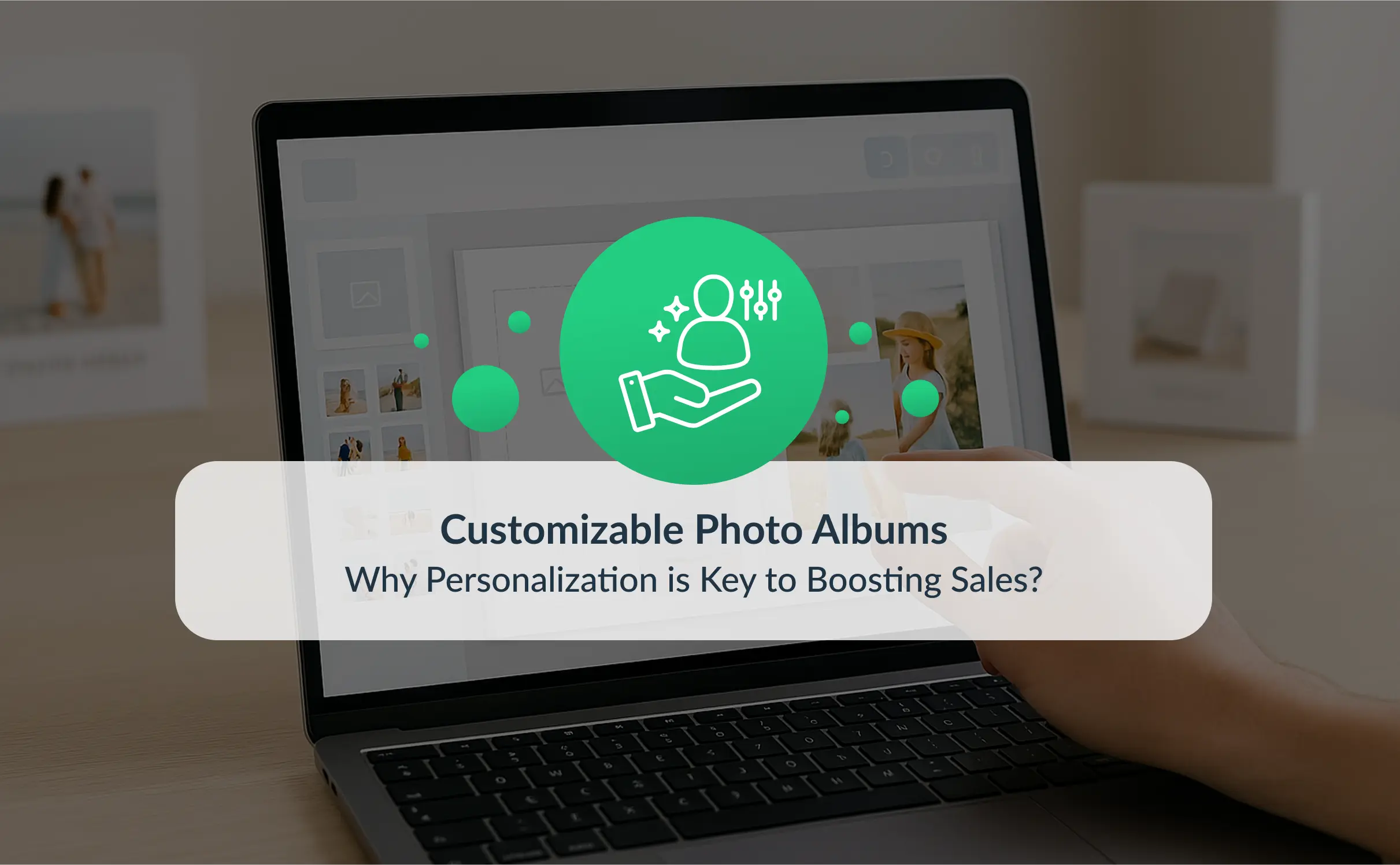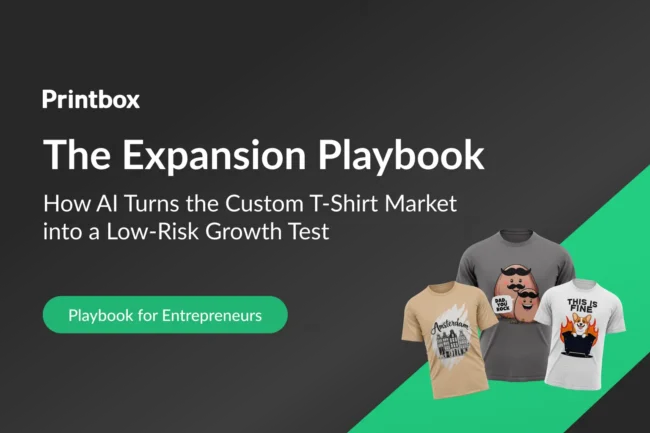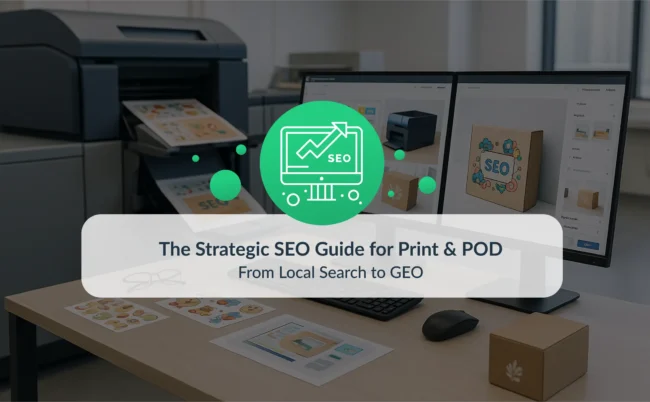Customizable Photo Albums – Why Personalization is Key to Boosting Sales?
It’s not uncommon for e-commerce teams to master logistics and marketing – but still get stuck when products become too static. Selling photo albums isn’t hard. Selling customizable photo albums at scale? That’s where things get interesting. The complexity creeps in quietly: variable page layouts, real-time previews, integration with personalization engines. Each added layer brings opportunity – and operational risk.
But here’s the thing: this product category isn’t just a nice-to-have SKU. Done right, they serve as powerful growth levers – directly influencing AOV, customer engagement, and repeat purchases. The B2B businesses winning in this space treat customization as a data-driven strategy, not a novelty.
We’ll walk you through everything from the mechanics of customization to its strategic value – and how to operationalize it at scale.
What Makes Photo Albums Customizable?
At a glance, photo album customization might seem like changing a background color or tweaking a cover design. But under the hood, it involves a much deeper stack: from front-end design flexibility to back-end data flows and print fulfillment logic. What actually makes photo albums customizable is the orchestration between design tools, user-facing templates, integrated image handling, and production-ready output.
There are three key components that enable this:
- Flexible Design Tools: Users expect real WYSIWYG editors that let them drag, drop, and arrange images or text across multiple layout options. Advanced tools now offer smart layouts powered by AI, auto-arranging photos to fit themes or dates.
- Dynamic Product Variants: Size, paper quality, binding style, and print finish – these aren’t static selections. Customization platforms should support dynamic combinations that adjust SKU logic and pricing in real-time.
- Production-Ready Output: The user’s “customized photo album cover” must translate into a precise, ready-to-print file. This involves generating PDFs (or alternative formats) that account for bleed lines, resolutions, and printer specs.
Market leaders find that rigid platforms force them to compromise on their brand vision. The real challenge is achieving deep customization without introducing instability or hitting a scalability ceiling. The most effective solutions provide a robust core for reliability while allowing for unmatched flexibility through modular design, adapting to business needs rather than dictating them.
Any software worth considering should make “photo albums customizable” from the ground up – not through added widgets but via built-in architecture. That’s what separates true personalization engines from clunky web-to-print plug-ins.
Benefits of Offering Personalized Photo Albums
Let’s be blunt: buyers don’t want just a product – they want to see their story reflected in the product. That’s why personalized photo albums outperform generic options in retention, referrals, and revenue per order. This isn’t a “nice touch” – it’s a category shift.
Offering customizable photo albums brings real commercial benefits:
- Increased Average Order Value (AOV): Personal touches often lead to upsells. Customers pay more for ultra-thick pages, foil stamping on covers, or higher-end bindings – all choices made possible by customization.
- Emotional Stickiness: A customized photo album isn’t easily replaced or forgotten. It builds attachment and increases the likelihood of return purchases (e.g. annual albums, gifts, vacation books).
- Product-Led Marketing: Social shares of individualized products act as organic promotion. Every customized photo album posted on Instagram becomes a mini billboard.
Leading companies now measure personalization not by the number of options offered, but by its direct impact on AOV and retention. Yet, many struggle to connect platform features to these key business metrics. A proactive partnership is crucial, where the vendor helps clients use platform data to identify and implement growth opportunities, ensuring technology translates into measurable revenue.
Design matters. But so does data. When buyers choose between standardized photobooks and customized photobooks tailored to their exact preferences, the latter wins on both emotional and commercial fronts.
One technological enabler worth noting here is Masterpiece AI, which integrates AI-driven art creation to further personalize the design experience. It’s another layer of differentiation that resonates with visually-driven audiences.
How to Implement Customization in Your Photo Album Business
So how do you actually operationalize all this? Here’s where vision meets execution – and where many businesses hit friction. Creating a custom photo album ecosystem isn’t just about tech. It’s a blend of software capability, process design, and buyer journey mapping.
First, choose a platform that can:
- Deliver real-time previews of customized designs.
- Handle high volumes of image data without performance dips.
- Offer ready-to-print output files that integrate with production workflows.
Then get clear on your internal capability:
- Do your customer support teams understand the product complexity?
- Can your production facility adapt to “one-of-a-kind” orders at scale?
- Is your ecommerce stack ready for dynamic pricing based on customization inputs?
Strategically, you’ll want to partner closely with your platform vendor – not just for plug-and-play tech but for roadmap alignment. For example, if you’re looking to offer a line of customized photo albums aimed at premium gifting markets, the conversation shouldn’t start with UI widgets. It should start with: What’s the right workflow to support customized photobooks across languages, currencies, and order volumes?
And don’t skip over marketing implementation. Build messaging around the emotional and control benefits of customization. Let users see sample flows. Educate them via onboarding flows or in-editor guidance. The more comfortable they feel customizing, the more they’ll buy.

Why Choose Printbox for Customizable Photo Albums?
Printbox wasn’t built as a one-size-fits-all photo printing tool. It was designed specifically for the demands of personalized photo products – especially at B2B scale. If you’re considering adding customizable photo albums to your catalog, there’s a lot worth unpacking in the Printbox offering.
First, there’s flexibility. The platform allows users to customize photo book experiences at multiple levels – from quick templates to entirely DIY drag-and-drop layouts. And it connects seamlessly to leading ecommerce platforms, whether you’re built on Shopify, WooCommerce or Magento.
Second, the tech is production-ready. Albums aren’t just previewed accurately in-browser – they’re turned into PDF/X-4 compliant files compatible with a wide range of digital presses and cover bonding machines. That matters when you’re managing 10 SKUs or 10,000. To further guarantee premium results, our platform includes AI-powered photo enhancement that automatically optimizes every image for ideal color, exposure, and sharpness. This automated quality control protects your brand by reducing customer complaints and ensures every photo looks its best in print.
And importantly, Printbox supports:
- Dynamic personalization, including AI-enhanced smart layouts
- Localization tools for global audiences
- Modular system design for evolving business needs
Whether you’re offering a simple customizable photo album or scaling to customized photo albums across multiple markets, Printbox offers the architecture to grow with you.
The Power of Customization in Photo Album Creation
What looked like a novelty ten years ago is now central to product strategy. Customization isn’t an add-on – it’s a hard requirement in many verticals. And when it comes to this product category, the expectations are only rising. Buyers don’t just want to add a name to a cover. They want story-driven layouts, seasonal themes, AI-recommended designs, and even the ability to co-create content.
With basic customization now table stakes, the new frontier is turning consumers into creators through generative AI. The challenge lies in making this technology accessible and commercially viable, not just a novelty. The next generation of personalization platforms are solving this by integrating AI-design tools that unlock new B2C business models for their B2B clients and enable mass production of one-of-a-kind products.
We’re already seeing how Generative AI Growth Strategies are fueling new revenue streams. For example, allowing users to create theme-specific visual content – wedding, pet, travel – based on text inputs alone. That’s no longer futuristic. It’s commercial.
Coupled with the rise of Mass Customization Insights, businesses are getting smarter about where to draw the line between operational viability and customer delight. Smart batching of orders. Automated error detection. Predictive templates. These aren’t perks – they’re enablers when you’re offering thousands of customized photo album cover variants across SKUs.
The shift is clear: the more you empower users to tell their own story – on their terms – the more they’ll engage, spend, and return.
Ready to Elevate Your Photo Album Offering?
Photo album customization, once complex and niche, has become standardized – but that’s exactly why it needs to evolve. Whether you’re scaling across markets or getting started with your first line of customized photo albums, the strategic stakes are high.
Want to see it in action? Book a Printbox demo. Have questions about scalability, feature fit, or data integration? Contact the Printbox team to start a deeper conversation.
What makes a photo album truly customizable?
A truly customizable photo album goes beyond cover designs—it integrates flexible design tools, dynamic product options, and production-ready outputs. This allows users to create tailored albums with variable layouts, formats, and finishes that match their personal stories.
Why should e-commerce businesses offer personalized photo albums?
Offering personalized photo albums increases average order value, boosts customer engagement, and encourages repeat purchases. Customization drives emotional connections and turns customers into promoters through social sharing of unique creations.
How can I scale customizable photo albums without risking quality or performance?
To scale effectively, choose a platform that offers stable performance at high volumes, generates accurate print-ready files, and integrates with your existing e-commerce and production workflows. Modular systems and proactive vendor partnerships are key to long-term success.
What features should I look for in a photo album customization platform?
Look for real-time editing tools, support for complex SKU logic, AI-assisted layouts, and seamless production integration. A robust platform should adapt to dynamic demands, not limit your creative or operational flexibility.
How does Printbox support large-scale customizable photo album businesses?
Printbox offers production-grade tools, drag-and-drop editors, modular design, and integration with major e-commerce systems. It's built for B2B scalability, supporting localization, AI features, and high-volume order processing without sacrificing customization depth.
What role does AI play in personalized photo album creation?
AI enhances customization by auto-arranging layouts, suggesting themes, and generating content from user inputs. Tools like Masterpiece AI empower users to co-create visual designs, making one-of-a-kind albums commercially viable at scale.




